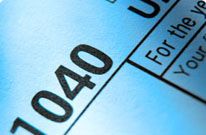Search results
Filing Individual Taxes - IRS
www.irs.govDeadline: April 18
- 1040 Form Instructions
- 1040-EZ Form Instructions
- 1040A Form Instructions
- 1040ES Form & Instr.
- Tax Tables Download
- Schedule A Form Instructions
- Schedule D Form Instructions
Oct 19, 2023 · Written by a TurboTax Expert • Reviewed by a TurboTax CPA Updated for Tax Year 2023 • October 19, 2023 8:47 AM. OVERVIEW. The Schedule D form is what most people use to report capital gains and losses that result from the sale or trade of certain property during the year. TABLE OF CONTENTS.
Jan 4, 2024 · Schedule D is an IRS form to help taxpayers compute their capital gains or losses and the taxes due. The calculations from Schedule D are combined with individual tax return Form 1040,...
Jan 5, 2024 · Key Takeaways. Schedule D: Capital Gains and Losses is required when a taxpayer reports capital gains or losses from investments or the result of a business venture or partnership. Schedule D is ...
Jan 6, 2023 · Updated on January 6, 2023. Reviewed by Eric Estevez. In This Article. View All. Photo: Inside Creative House / Getty Images. The Schedule D of Form 1040 is used to report capital gains and losses when you file your tax return. Learn how to use Schedule D during tax season, and who needs it.
Jan 20, 2024 · What is a Schedule D? Schedule D is an IRS tax form that reports your realized gains and losses from capital assets, that is, investments and other business interests. It includes relevant ...
Sep 14, 2023 · IRS Schedule D (1040) is broken up into three main parts, with each being labeled. The first part is for short-term gains and losses, which are those held for one year or less. The second part is for long-term gains or losses, which are held for more than one year. The final section is the summary.
Oct 4, 2023 · Schedule D is the IRS form you use to report sales and exchanges of certain assets, as well as the gains or losses from all asset sales. You use Schedule D to report money you made or lost by selling investments like stocks , mutual funds , digital assets, and publicly traded partnerships (PTPs).

